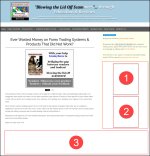- Home
- Girvan Lambert
- The Bear is Back. Get Used to It.
The Bear is Back. Get Used to It.
by Girvan Lambert
(Canada)
The Bull has had its run and it's about to hand over to the bear now, in what may very well be considered a natural market-cycle. Indeed, the old bear is back as grouchy as ever despite the fact that trend-followers and cheerleaders on Wall Street have done everything in their power for months now to keep the Bull in the race. The problem is though, that there's nothing left to cheer for and Bull has long been slaughtered, its brief dinner-table presence a distant memory too.
March 10, 2009 is the day the run of the bull began. The US stock market bottomed out, no one was bullish about anything. Since then, all the major indexes have rebounded nicely: the majority of them have more than doubled. There's no getting around the fact though that like everything, this massive bull run has come to its end too.
To begin with: stocks are overvalued. By what metric you may ask? By almost every one of them, but the price-to-sales ratio, one of the most accurate in this respect, is alarmingly high at 1.7, having left the mean value of 1.4 long ago in the dust.
S&P 500 companies have had their earnings and revenues decline lately. More precisely, earnings for the second quarter declined by some 0.7% while revenues followed suit to the tune of 3.4%. Perhaps more significantly though, the Q2 contraction marked the first time since 2009 that the S&P 500 revenues turned southward for two consecutive quarters.
The global economy as a whole is losing steam, with most major economies either already in recession or heading there. Falling inflation is a definitive indicator in this respect, as shown by the Core PCE index and the CRB index. The bad news out of China and the recent statements from various EU officials concerning the continuation of their QE policy as well as the woes of resource-producing countries such as Australia, Russia and Brazil round out the negative outlook.
In addition to all the above, global trade is headed south too, together with US GDP and manufacturing. In the short run though, quite possibly the strongest indication of the fact that the bear is about to get much stronger is that the Fed is apparently looking to pull its support from behind the stock market. It goes without saying that zero interest rates have had a major say in the doubling of the stock market's value. The end of this policy - which may be imminent according to various clues dropped by Fed officials - will result in the slowing of US GDP and implicitly of the global GDP as well. The move will push the US dollar higher, to the detriment of the manufacturing and export sectors, which are already struggling as it is...
Use automated binary trading software to increase your binary option profits and to do away with the stress factor completely.
Return to Girvan Lambert's Articles.





